- News
- Reviews
- Bikes
- Accessories
- Accessories - misc
- Computer mounts
- Bags
- Bar ends
- Bike bags & cases
- Bottle cages
- Bottles
- Cameras
- Car racks
- Child seats
- Computers
- Glasses
- GPS units
- Helmets
- Lights - front
- Lights - rear
- Lights - sets
- Locks
- Mirrors
- Mudguards
- Racks
- Pumps & CO2 inflators
- Puncture kits
- Reflectives
- Smart watches
- Stands and racks
- Trailers
- Clothing
- Components
- Bar tape & grips
- Bottom brackets
- Brake & gear cables
- Brake & STI levers
- Brake pads & spares
- Brakes
- Cassettes & freewheels
- Chains
- Chainsets & chainrings
- Derailleurs - front
- Derailleurs - rear
- Forks
- Gear levers & shifters
- Groupsets
- Handlebars & extensions
- Headsets
- Hubs
- Inner tubes
- Pedals
- Quick releases & skewers
- Saddles
- Seatposts
- Stems
- Wheels
- Tyres
- Health, fitness and nutrition
- Tools and workshop
- Miscellaneous
- Cross country mountain bikes
- Tubeless valves
- Buyers Guides
- Features
- Forum
- Recommends
- Podcast
review
£2,000.00
VERDICT:
A fast machine with sorted geometry, but its firm ride won't appeal to all
Weight:
8,780g
Contact:
At road.cc every product is thoroughly tested for as long as it takes to get a proper insight into how well it works. Our reviewers are experienced cyclists that we trust to be objective. While we strive to ensure that opinions expressed are backed up by facts, reviews are by their nature an informed opinion, not a definitive verdict. We don't intentionally try to break anything (except locks) but we do try to look for weak points in any design. The overall score is not just an average of the other scores: it reflects both a product's function and value – with value determined by how a product compares with items of similar spec, quality, and price.
What the road.cc scores meanGood scores are more common than bad, because fortunately good products are more common than bad.
- Exceptional
- Excellent
- Very Good
- Good
- Quite good
- Average
- Not so good
- Poor
- Bad
- Appalling
The Reacto Disc 4000 is Merida's lowest priced aero road bike with hydraulic braking, and as a package it offers pretty decent value for money. It's a fast bike and handles sweetly through the bends, but some might prefer a little more feedback from the frame and fork.
- Pros: A quick bike for tapping out the miles, balanced handling
- Cons: Overly firm ride, wheels don't benefit the aero attributes of the frame
The ride
At the same time as testing the Reacto I was also riding the Scultura Disc 200, Merida's alloy framed non-aero road bike, and I was massively impressed with the comfort of the frame. There was little in the way of road buzz, and harshness certainly wasn't evident.
> Find your nearest dealer here
Unfortunately, I found the Reacto 4000 to be the opposite. Whether that is down to the oversized aero tubing, the carbon choice or a bit of both, it has a pretty uncompromising frameset. You feel everything from the road as it travels up through the bike, but not in a good way.
I like a frame that tells me exactly what is going on with the tyres beneath you – the slightest change in traction or road surface, for instance. A good frame of any material can do this, taking out the harshness and shrill vibration but keeping the important information coming through.
The Reacto lets all of the chatter through, but in a kind of muted way that takes the edge off, leaving you just that fraction of a second behind as you carve your way through the bends.
I'm not saying the Reacto is uncomfortable to ride – I was still completing three and four-hour rides, and while I knew I'd been on it I wasn't exactly bruised and battered – I was just expecting more from the frame itself, I suppose.
Merida's aero seatpost design does take some of the sting out of its tail, thanks to the notched-out area underneath the clamp that promotes some flex beneath the saddle. A silicone rubber cover fills the gap to maintain the aerodynamics.
The Reacto can't half cover some distance at speed, mind, and if you change the standard wheels for something with a deeper rim to exploit the aero design of the frame and fork you can really feel the benefits above about 25mph.
The CF2 frame used for the 4000 is more relaxed in geometry than the CF4 of the higher end models like the Reacto Disc Team-E tested by Mat, and sits somewhere in between a full race bike and a more relaxed endurance setup. This means you don't need to be super-flexible to get down on the drops and power along into the wind.
> Your guide to Merida's 2019 road bike range
With a 73-degree head angle for this M/L size and a 73.5-degree seat angle, the Reacto is reasonably aggressive, plus by managing to keep the wheelbase at 995mm it's pretty nimble too.
The steering is quick enough to be exciting without entering into the territory of twitchiness, and it is a competent descender, responding well to small tweaks in body weight and position as you change direction on the technical sections.
At 8.78kg (19.35lb) it's not exactly that light a bike, which does blunt the acceleration and climbing a touch. A lot of this could be rectified by upgrading the standard heavy wheels and tyres further down the line, which makes a big difference.
If the weight is holding you back from setting KOMs on your local hills, it won't be hampered further by a lack of stiffness at the tapered head tube or massive BB386 bottom bracket junction.
Frame and fork
A model in this size has a claimed frame weight of just 1,050g according to Merida, which is impressive for an aero design that incorporates disc brakes.
The aero tubing has been based on the NACA (National Advisory Committee for Aeronautics) teardrop profile where the rear end is squared off. The claims are that the air travels around the tube as if the missing teardrop is still there, in turn saving material and weight.
Up front, the tapered head tube has a 1 1/8in upper bearing expanding to a 1 1/4in at the bottom for increased stiffness under steering loads and heavy braking forces, helped by the 12mm thru-axle wheel retainment found on both the frame and fork.
Something else you'll find at the (flat mount) brake mounts are Merida's disc coolers: finned pieces of alloy designed to take the heat away from the rotors and surrounding area, reducing heat build-up by a claimed 35%.
It's not something I'd say is massively needed here in the UK as our descents aren't really long enough to generate dangerous levels of heat, but if you are in the mountains they may come into play, especially if you like to drag the brakes.
At the bottom bracket Merida has gone for a BB386 setup, which allows the use of a wider 86mm bottom bracket shell than a 68mm one found on standard frames, by incorporating the press-fit bearings into the frame. This allows a larger surface area to mate a wider seat tube and down tube, giving more stiffness. It's also designed for 30mm-axle chainsets.
Completing the stiff rear triangle, Merida has dropped the seatstays low as well.
The overall finish of the frame and fork is great and it certainly feels a solid build. It looks the business too, with all of those chunky and aggressive tube profiles going on.
For a clean look you get full internal cable routing, and I'm happy to report that, as stiff as the frame is, there are no irritating rattles coming from the cables pinging against the inside of the tubing.
For a carbon frame it's good to see a decent spread of sizes, too: six in total, ranging from a 520mm top tube through to a 590mm.
Finishing kit
The majority of the groupset is taken care of by Shimano's excellent new R7000 setup paired with the same group's R7020 hydraulic brake levers/shifters and callipers.
As you can tell if you read those reviews, it is a stunning groupset, arguably offering the best bang for buck out there on the market. The shifting is precise and quick up and down the cassette or chainrings, and the braking from the newly shaped, group-specific levers offers great feedback and modulation.
To break things up a little Merida has specced an FSA Gossamer Pro chainset that is BB386 specific. With chainrings of 52/36, known as a semi-compact, it has the right sort of gearing ratios to suit this style of bike.
Merida has fitted a long cage rear mech which allows the use of its chosen 11-30 cassette, but you could go for lower gearing at the back without needing to change anything other than the sprockets.
Everything else bar the tyres is Merida branded and it is all decent enough kit, if not overly exciting on a two-grand bike.
Starting at the front you get an alloy Expert handlebar and stem. The bar has a compact design so there are plenty of usable hand positions without getting into too extreme a riding position. Both components offer plenty of stiffness.
I've mentioned the Merida Expert CW seatpost already, with its little notch design for promoting flex while still maintaining its aero shape. The post is made out of carbon fibre and comes with a 15mm setback, and you'll find an own brand Comp SL saddle attached to the top.
It's a pretty comfortable seat, providing a decent balance of firm padding and enough give to take the edge off the frame's characteristics. I wouldn't be in a hurry to change it.
Wheels and tyres
Merida's own wheels, using Merida rims and hubs, do a sound job. I've mentioned that they are weighty but they stayed true throughout the test period and that was after I whacked a rock on a 45mph descent with the rear.
Judging by the clout and the noise it made before I managed to stop the bike, I was expecting some serious damage to the rim but not even a buckle or a scratch, just a pinch punctured tube.
Continental's Grand Sport Race tyres in a 25mm width are good mid-range offerings that provide adequate grip, rolling resistance and puncture protection without sacrificing anything to a huge degree. As with the wheels, if performance is your thing then an upgrade will make a massive difference.
Value
You can find a build of this sort of spec on a carbon fibre, disc-equipped race bike from around £1,300 – something like the Merlin Cordite Disc which has the same 105 groupset, average wheels and quite a firm ride like the Reacto.
There is a lot more going on with the frame and fork design on the Merida, though, and it's that level of R&D that is reflected in the price of £2,000.
> Buyer's Guide: 18 of the best aero road bikes
A similarly themed Tifosi SS26 Disc aero endurance bike decked out in Campagnolo Potenza will set you back £2,499.99 and it's a very similar weight to at 8.7kg.
Not quite an aero bike, but the Lapierre Pulsium SL 500 Disc has its own clever development tricks incorporated in its frameset, and with a 105 hydraulic groupset it costs £2,199, showing that the Merida Reacto 4000 isn't a million miles away with its pricing.
Conclusion
Overall, I like the Reacto for the way it just gets on with the job of covering miles quickly and offering a confident ride and handling ready to be exploited. As a rider, though, I just crave a little more involvement from the frame in terms of feedback from the road.
Verdict
A fast machine with sorted geometry, but its firm ride won't appeal to all
road.cc test report
Make and model: Merida Reacto Disc 4000
Size tested: M/L
About the bike
List the components used to build up the bike.
Merida lists:
FRAME REACTO CF2 DISC
FORK MERIDA REACTO CF2 DISC
HUBS MERIDA QR48N 12-100 / MERIDA QR48 12-142
TYRES Continental Grand Sport Race
SHIFTERS Shimano 105 disc
FRONT DERAILLEUR Shimano 105
REAR DERAILLEUR Shimano 105
CASSETTE Shimano CS-R7000
BRAKE LEVER Shimano 105 R7000
BRAKES Shimano 105
ROTORS Shimano RT54
BOTTOM BRACKET FSA 386-BB30 PF6000 [FSA FC]
CHAIN KMC X11-1
HEADSET MERIDA REACTO Neck
HANDLEBAR MERIDA Expert CW
STEM LENGTH MERIDA Expert CC
SADDLE MERIDA Comp SL
SEAT POST MERIDA Expert CW
SEAT CLAMP MERIDA REACTO Aero
GRIP MERIDA Road Expert
Tell us what the bike is for and who it's aimed at. What do the manufacturers say about it? How does that compare to your own feelings about the bike?
The Reacto is Merida's aero race bike range, with this 4000 model using the slightly less aggressive CF2 frame geometry rather than the race-inspired CF4 found on the top models.
I found the 4000 to deliver well on its aerodynamic claims – it's a quick bike to ride.
Where does this model sit in the range? Tell us briefly about the cheaper options and the more expensive options
This model is the entry level into Reacto disc brake ownership, while the more expensive 5000 model comes in both rim and disc brake options. The range tops out with the Disc Team-E at £8,250.
Frame and fork
Overall rating for frame and fork
8/10
Tell us about the build quality and finish of the frame and fork?
Well made and finished, you can feel the quality.
Tell us about the materials used in the frame and fork?
Merida doesn't give away many details about the grades used in its construction, but both the frame and fork are full carbon fibre.
Tell us about the geometry of the frame and fork?
The Reactos that use the CF2 frame and fork have a slightly taller front end and shorter top tube than the top end models, which means they sit somewhere between the geometry of a race bike and an endurance machine.
Full details can be found here.
How was the bike in terms of height and reach? How did it compare to other bikes of the same stated size?
This M/L size has a reach of 390mm and a stack of 575mm giving a position that is racy without being too aggressive.
Riding the bike
Was the bike comfortable to ride? Tell us how you felt about the ride quality.
It is right on the boundary of what I could live with, having a very firm frame.
Did the bike feel stiff in the right places? Did any part of the bike feel too stiff or too flexible?
The frame is very stiff throughout.
How did the bike transfer power? Did it feel efficient?
Efficiently, especially when climbing or sprinting.
Was there any toe-clip overlap with the front wheel? If so was it a problem?
No.
How would you describe the steering? Was it lively neutral or unresponsive? The slightly quick side of neutral.
Tell us some more about the handling. How did the bike feel overall? Did it do particular things well or badly?
You don't get quite as much feedback from the frame and fork as you do on some bikes and this takes the edge off the handling a bit.
Which components had the most effect (good or bad) on the bike's comfort? would you recommend any changes?
The seatpost helps.
Which components had the most effect (good or bad) on the bike's stiffness? would you recommend any changes?
The area around the BB is very stiff thanks to the BB386 and 30mm spindle on the crankset.
Which components had the most effect (good or bad) on the bike's efficiency? would you recommend any changes?
Lighter wheels really improve performance.
Rate the bike for efficiency of power transfer:
8/10
Rate the bike for acceleration:
8/10
Rate the bike for sprinting:
7/10
Rate the bike for high speed stability:
8/10
Rate the bike for cruising speed stability:
8/10
Rate the bike for low speed stability:
8/10
Rate the bike for flat cornering:
8/10
Rate the bike for cornering on descents:
7/10
Rate the bike for climbing:
7/10
The drivetrain
Rate the drivetrain for performance:
9/10
Rate the drivetrain for durability:
8/10
Rate the drivetrain for weight:
8/10
Rate the drivetrain for value:
6/10
Tell us some more about the drivetrain. Anything you particularly did or didn't like? Any components which didn't work well together?
It all works well as a package; the components are what I'd expect for the money and quality of the frame.
Wheels and tyres
Rate the wheels for performance:
6/10
Rate the wheels for durability:
8/10
Rate the wheels for weight:
6/10
Rate the wheels for comfort:
7/10
Rate the wheels for value:
6/10
Tell us some more about the wheels.Did they work well in the conditions you encountered? Would you change the wheels? If so what for?
The own brand wheels are tough and roll okay but are a bit weighty.
Rate the tyres for performance:
7/10
Rate the tyres for durability:
8/10
Rate the tyres for weight:
7/10
Rate the tyres for comfort:
7/10
Rate the tyres for value:
6/10
Tell us some more about the tyres. Did they work well in the conditions you encountered? Would you change the tyres? If so what for?
Solid all-round tyres from Continental. An upgrade would help later down the line but it's no rush.
Controls
Rate the controls for performance:
7/10
Rate the controls for durability:
8/10
Rate the controls for weight:
7/10
Rate the controls for comfort:
7/10
Rate the controls for value:
6/10
Tell us some more about the controls. Any particularly good or bad components? How would the controls work for larger or smaller riders?
Simple stuff up front that does the job, and the seatpost benefits comfort.
Your summary
Did you enjoy riding the bike? Yes and no...
Would you consider buying the bike? No, the ride feedback isn't as sharp as I like.
Would you recommend the bike to a friend? Yes
How does the price compare to that of similar bikes in the market, including ones recently tested on road.cc?
For the level of quality and components it is in the right ball park against other aero bikes.
Rate the bike overall for performance:
7/10
Rate the bike overall for value:
6/10
Use this box to explain your overall score
As a package the Reacto 4000 delivers a lot; it's a quick bike, but it's also very firm – don't expect too much in the way of feedback.
About the tester
Age: 40
I usually ride: This month's test bike My best bike is: B'Twin Ultra CF draped in the latest bling test components
I've been riding for: Over 20 years I ride: Every day I would class myself as: Expert
I regularly do the following types of riding: time trialling, commuting, club rides, sportives, fixed/singlespeed
Since writing his first bike review for road.cc back in early 2009 senior product reviewer Stu has tested more than a thousand pieces of kit, and hundreds of bikes.
With an HND in mechanical engineering and previous roles as a CNC programmer/machinist, draughtsman and development engineer (working in new product design) Stu understands what it takes to bring a product to market. A mix of that knowledge combined with his love of road and gravel cycling puts him in the ideal position to put the latest kit through its paces.
He first made the switch to road cycling in 1999, primarily for fitness, but it didn’t take long for his competitive side to take over which led to around ten years as a time triallist and some pretty decent results. These days though riding is more about escapism, keeping the weight off and just enjoying the fact that he gets to ride the latest technology as part of his day job.








































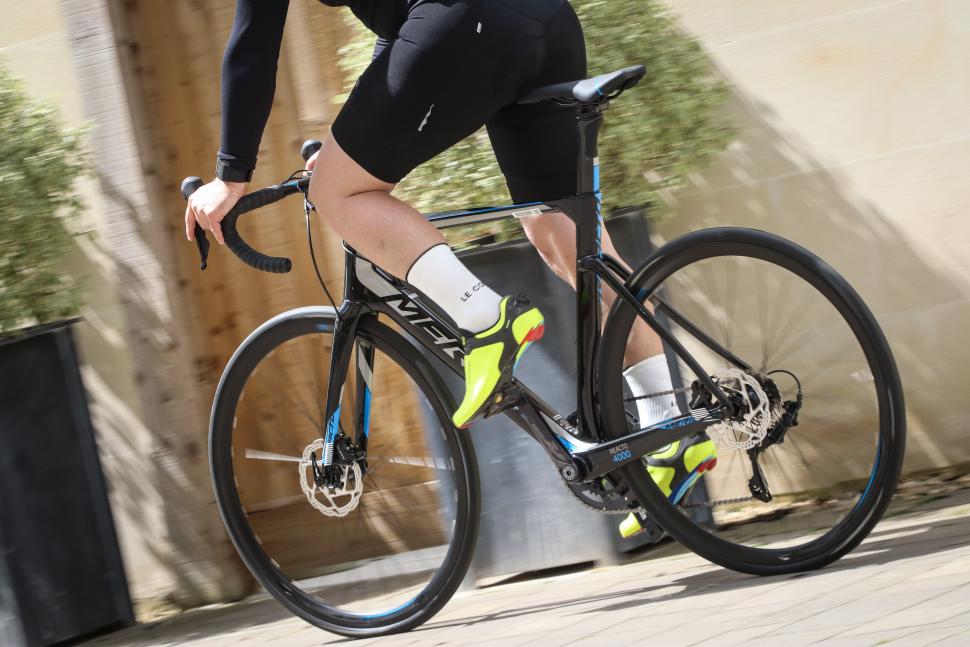

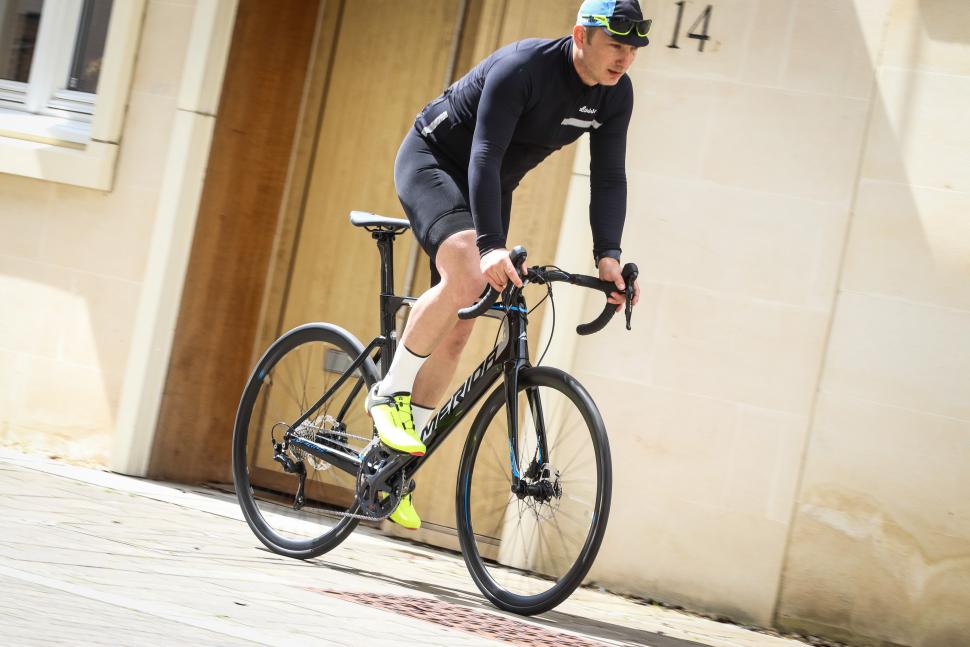
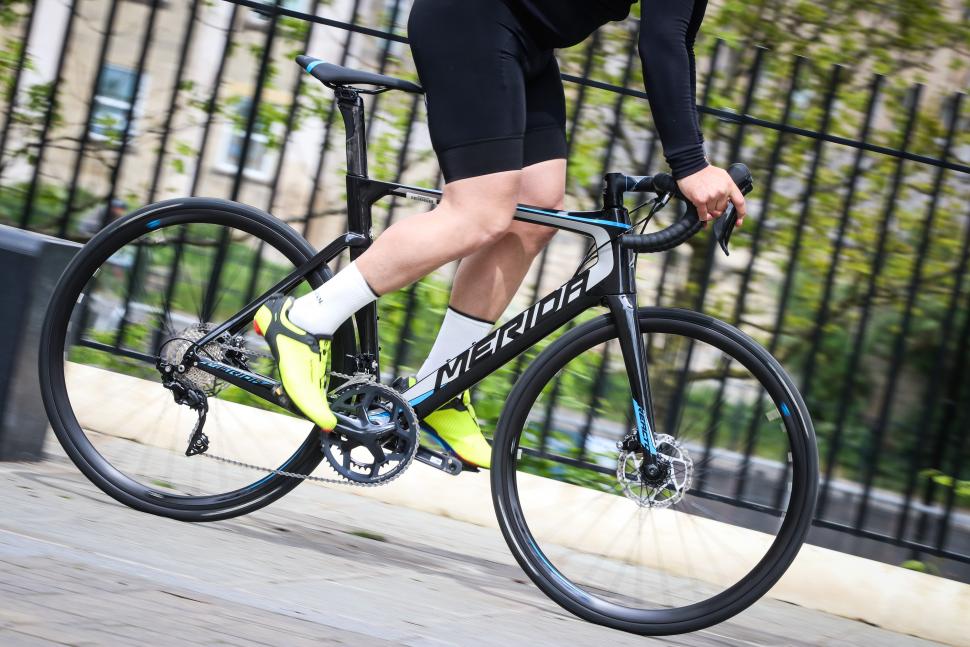



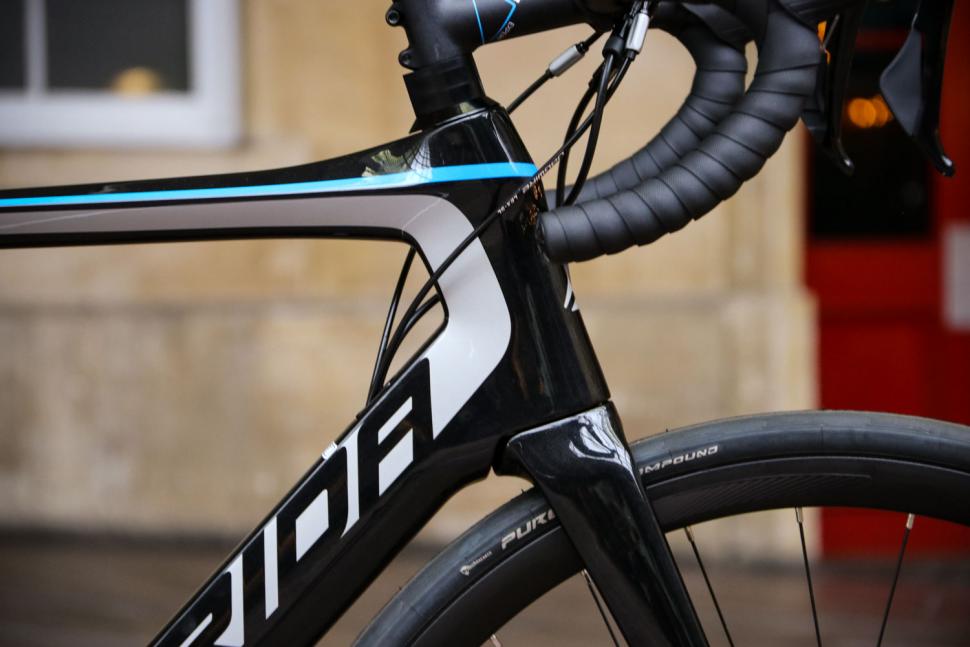

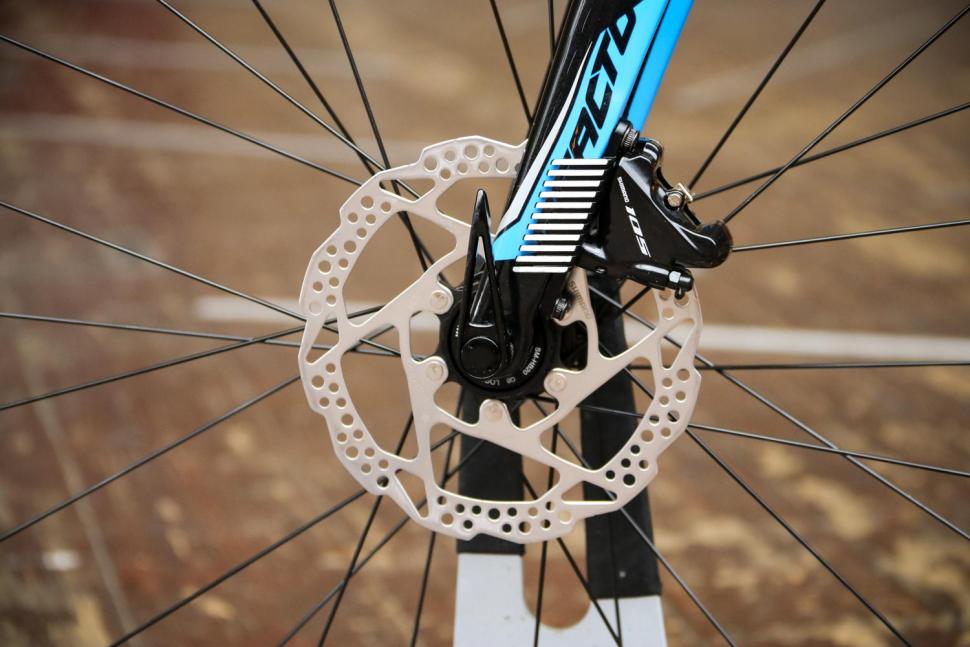
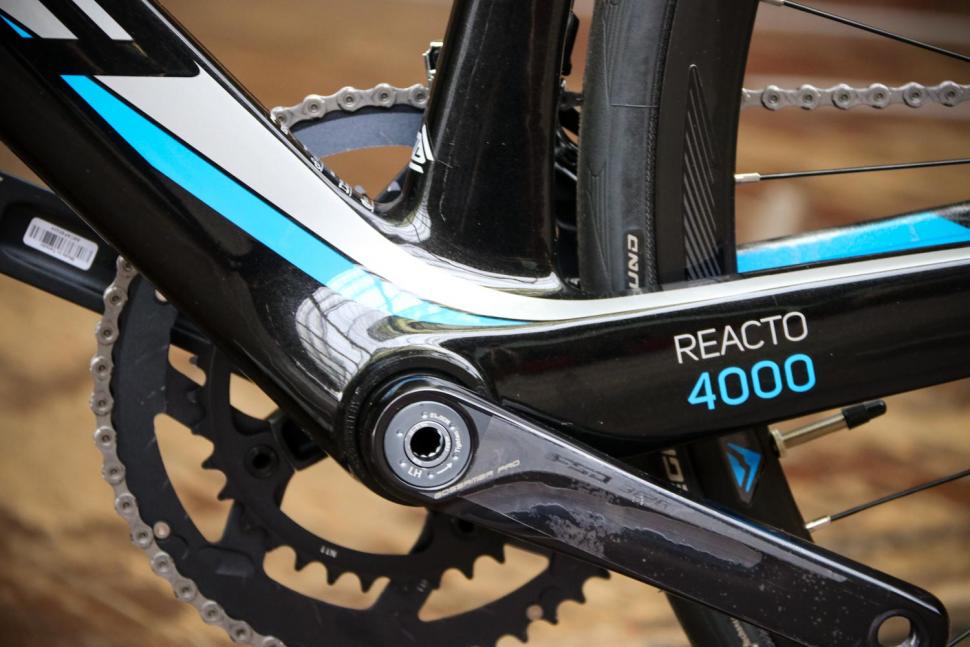
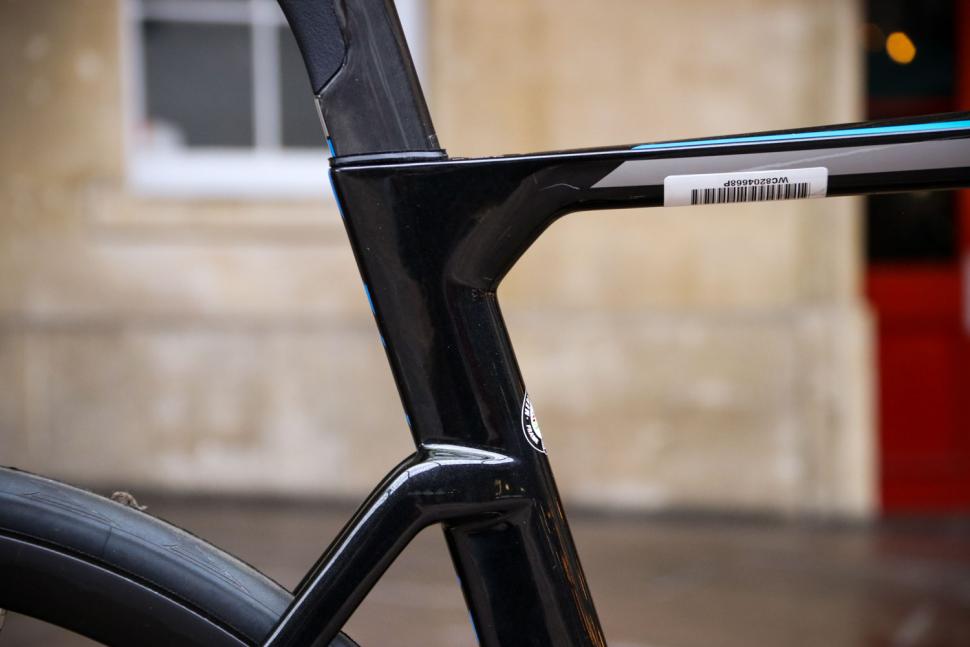
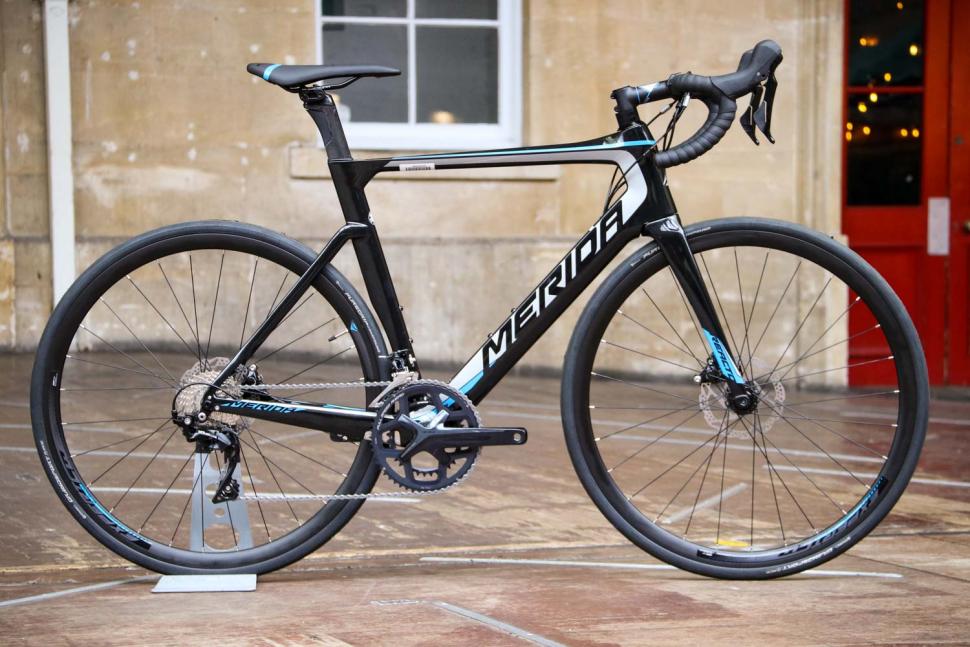
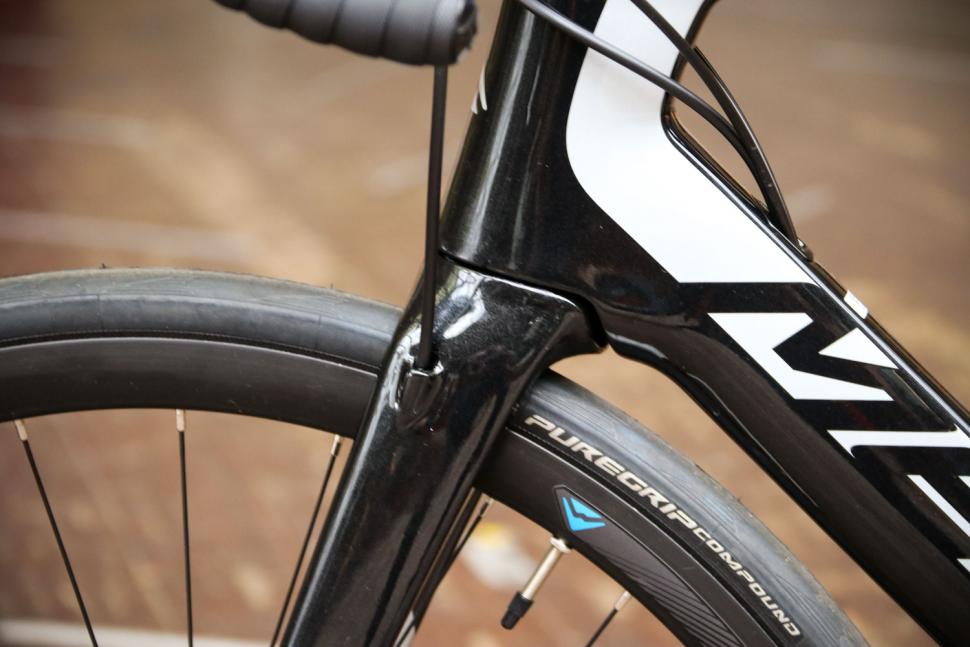
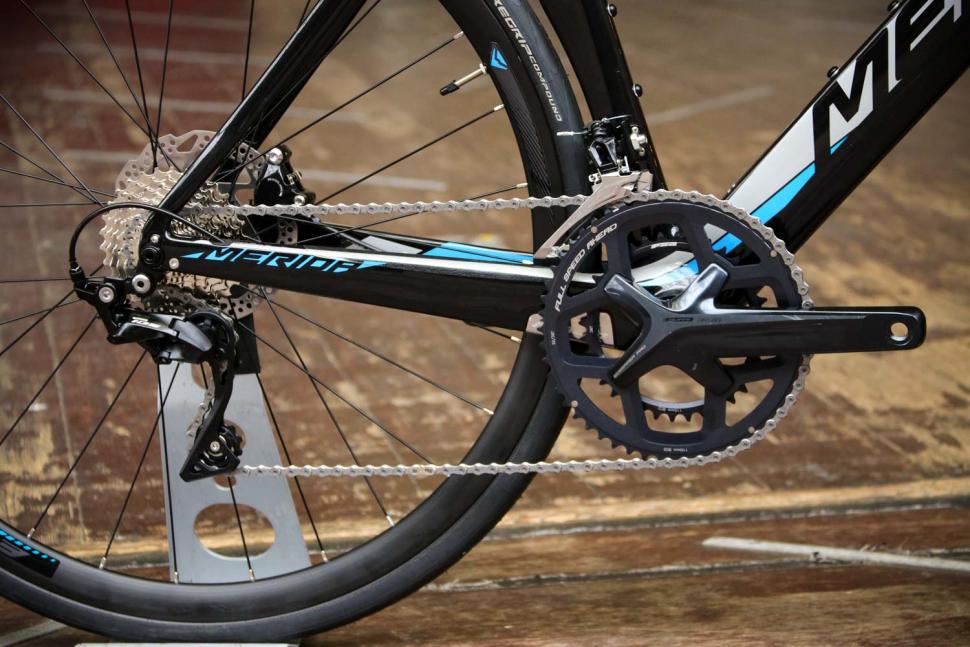
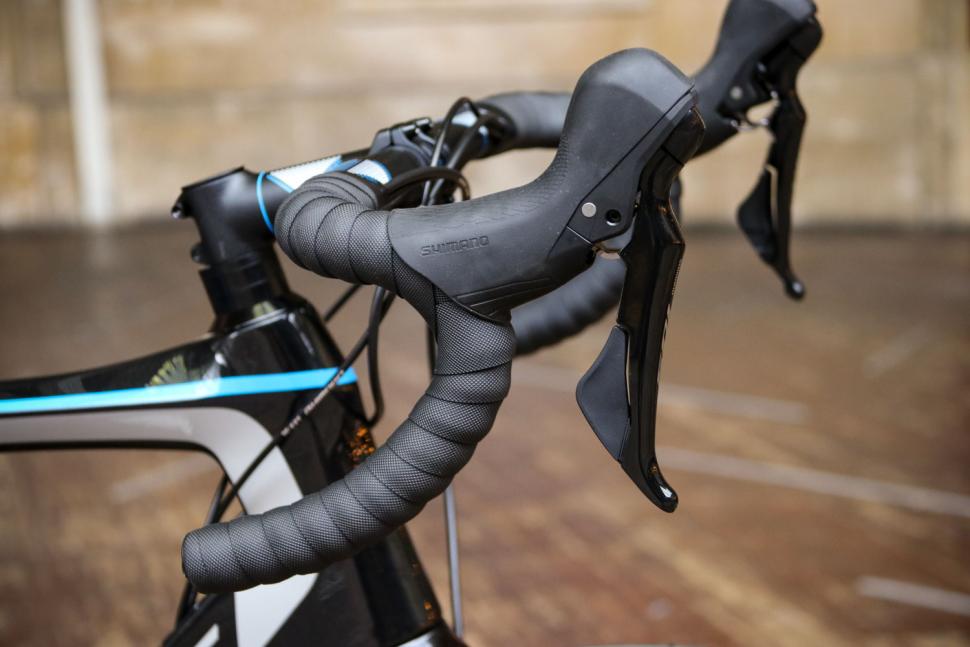


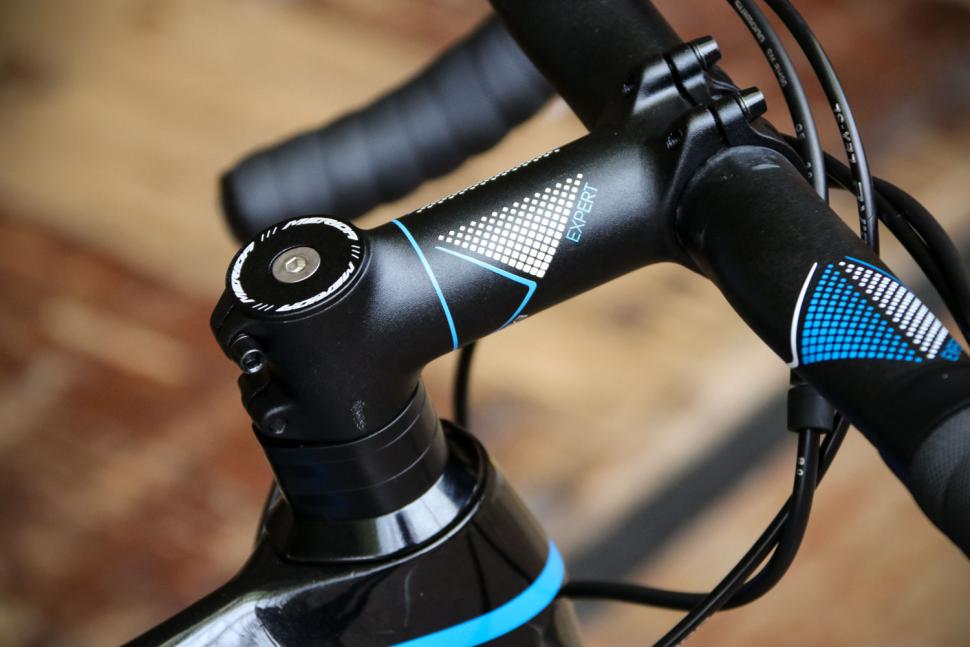
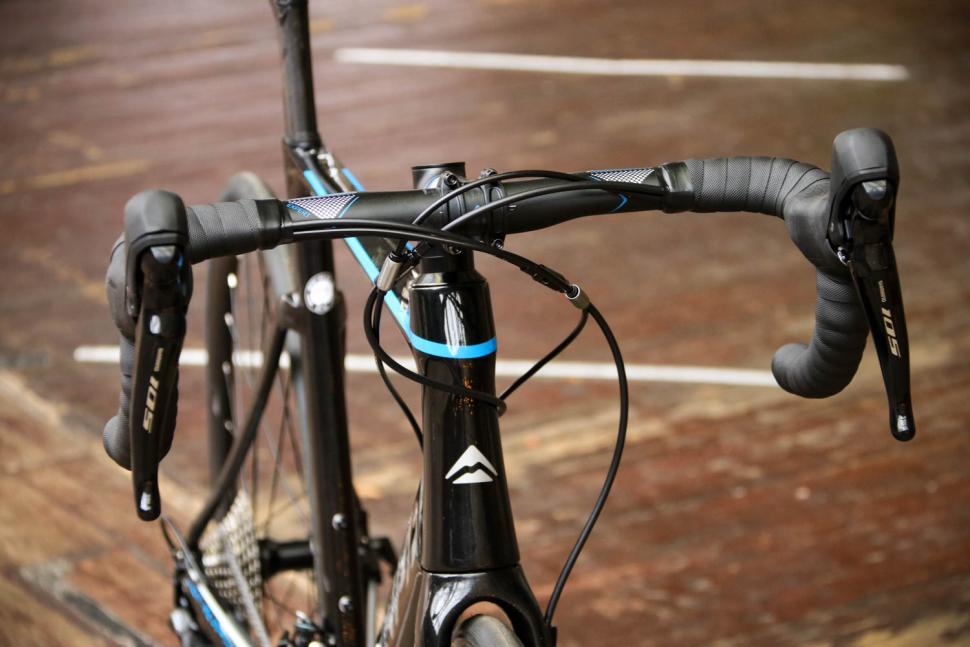
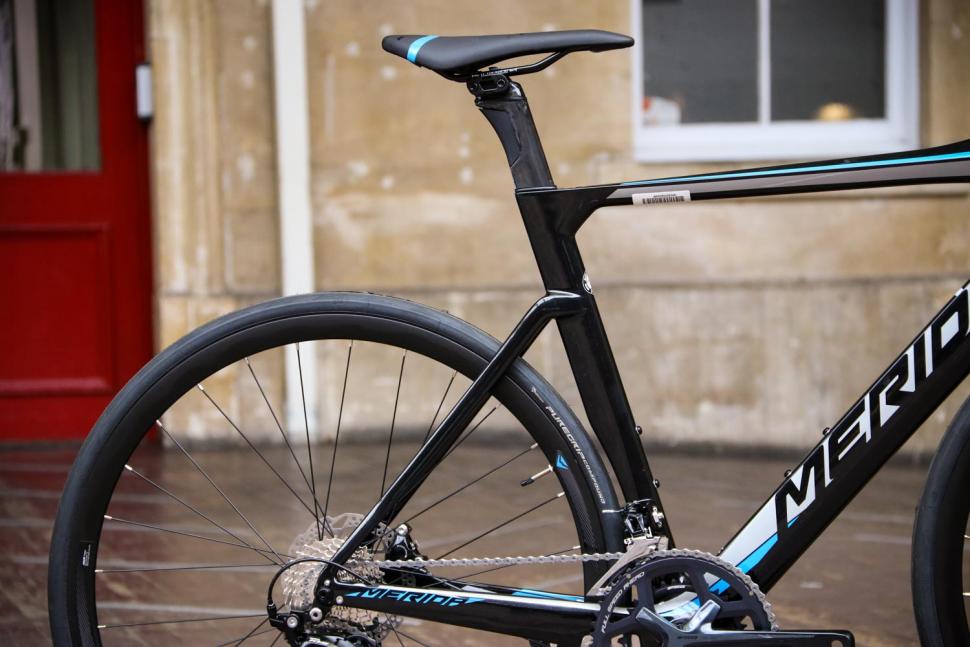

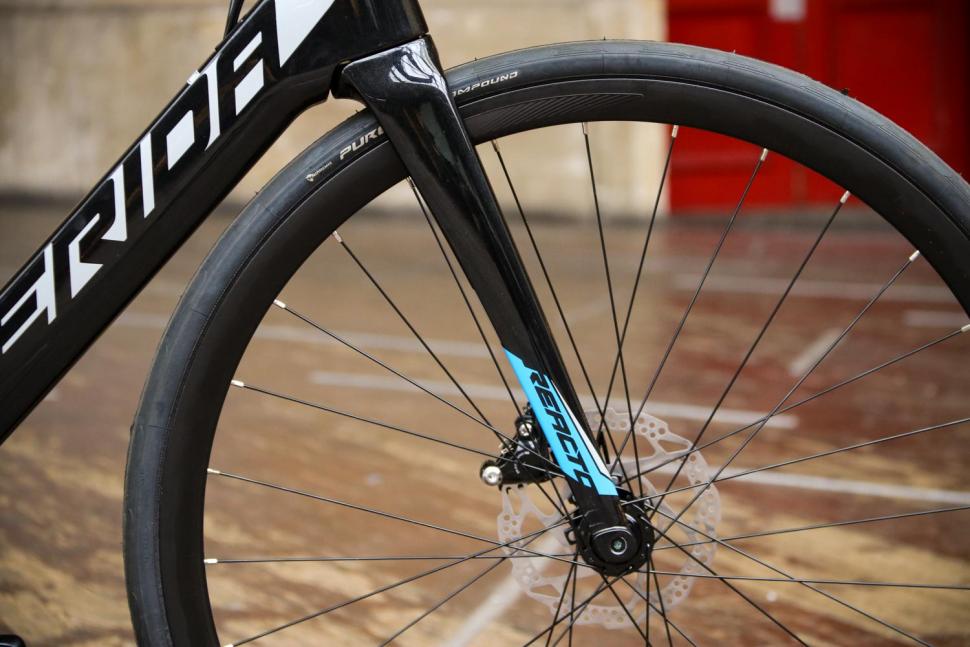

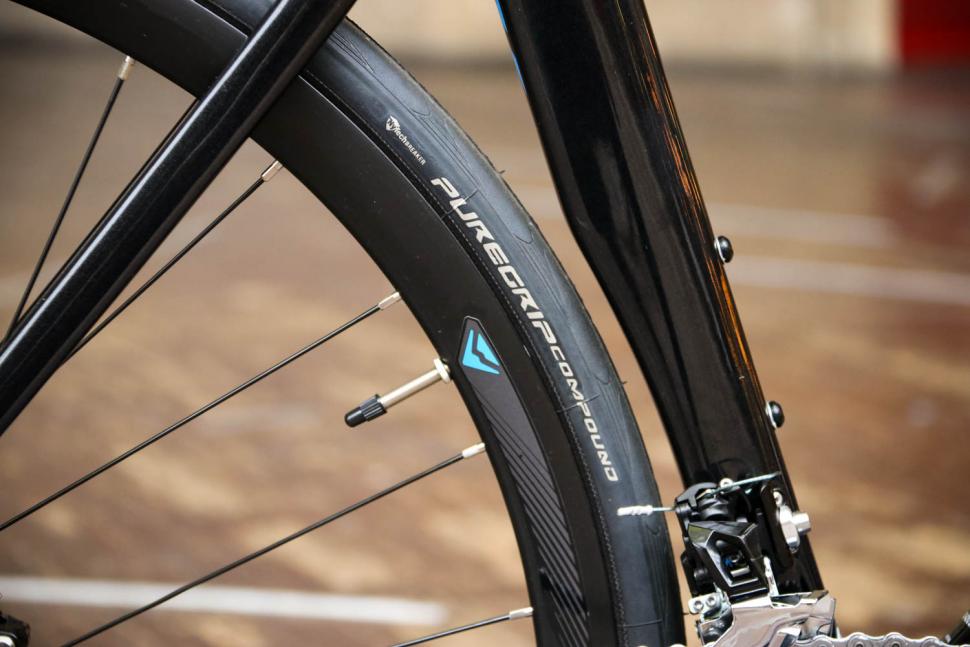




Well, I finally got some response from my repeated requests as to what was happening with the alleged database and was supplied with a link which...
I think alot of that is down to whether the people in the company who can make those decisions that benefit cycling for employees, even at a local...
The quote is cannot not were not. As already posted by tom_77 they could be charged with manslaughter
Subheading for point two doesn't seem to match the written content about insufficient stack causing problems and advice not to cut your steerer down.
Not sure who is "grinding to a halt" in London. My journey this morning during rush hour from Paddington Station to my office by Trafalgar Square...
Thanks - was about to say that.
Don't buy American.
So many motorists don't observe zebra crossings....
I don't quite get internal frame storage, surely you're making the frame weaker by cutting a hole in it? Are they really saying they've got more...
Well they're definitely not cheap